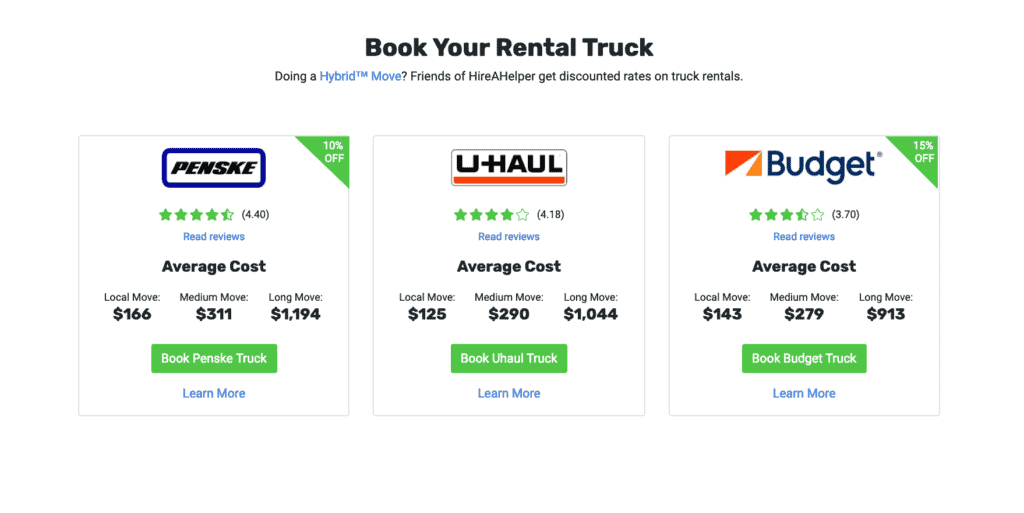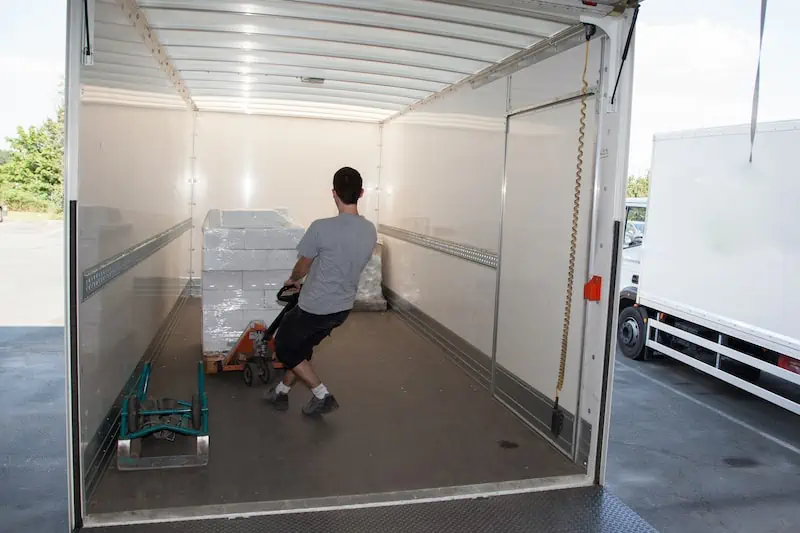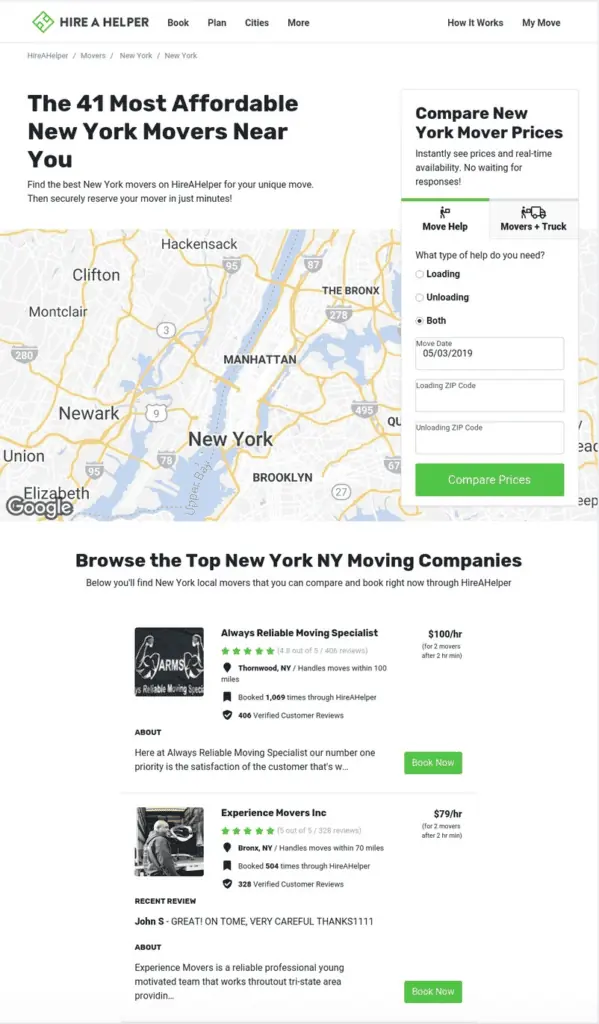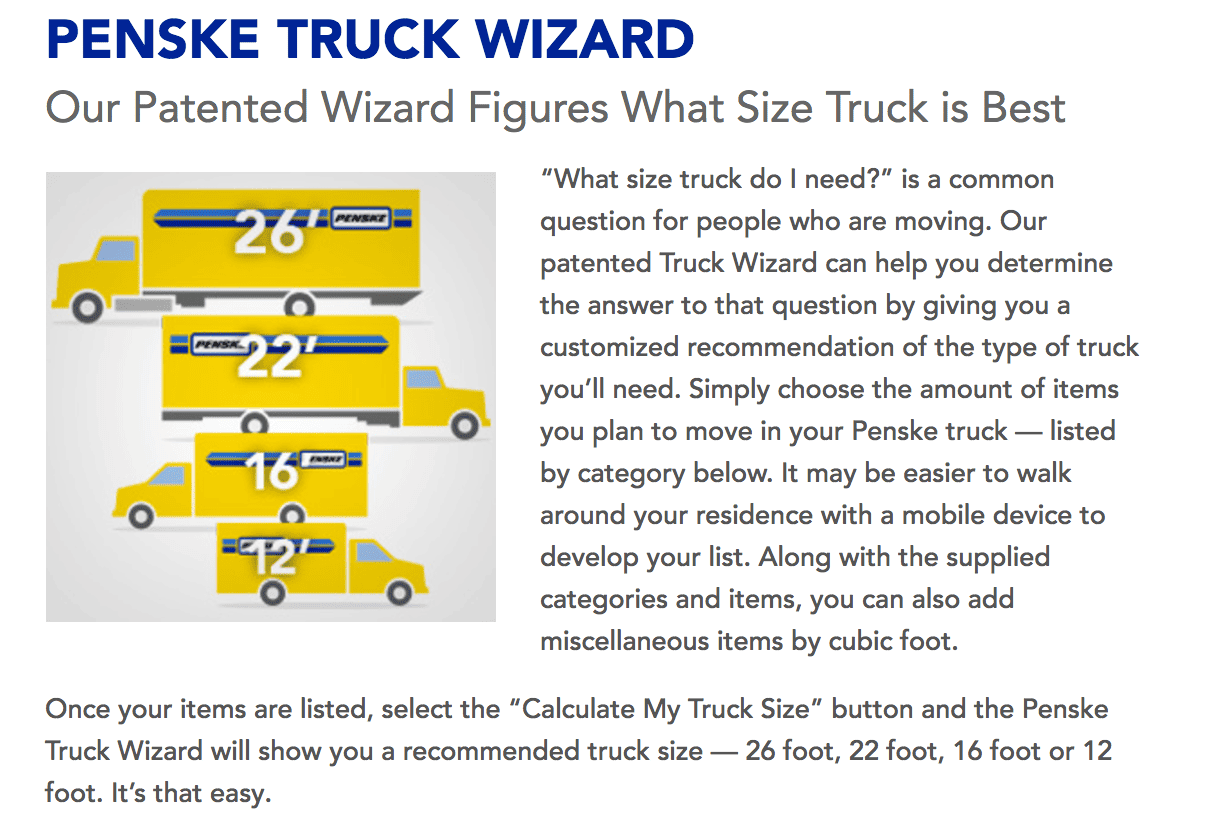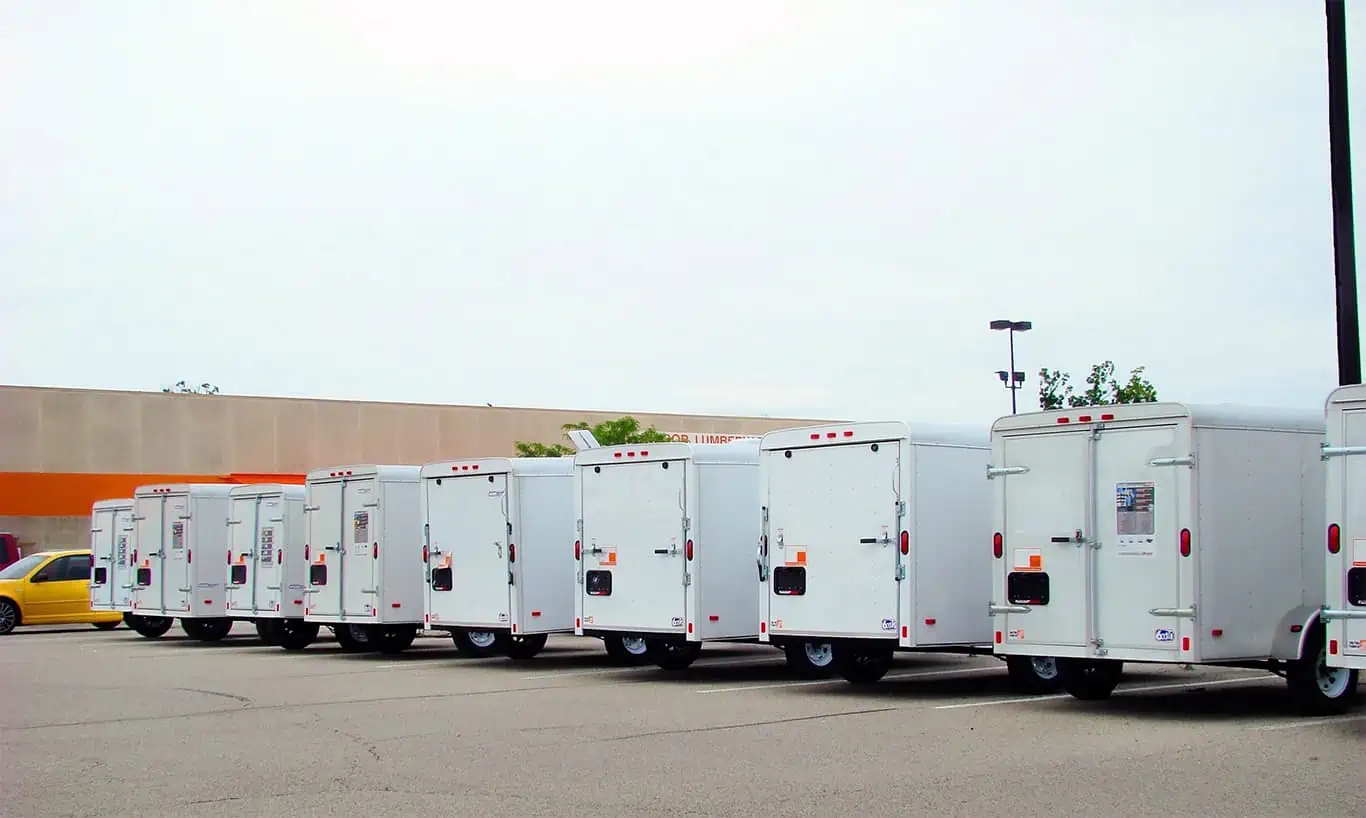Key Findings
- Based on our projections, the cost of moving in 2023 will be 2% lower than in 2022
- Moving costs are 4% higher so far in 2023 than in the same period last year
- The average cost of a move is projected to peak at $421 by August 2023, 7% lower than last year’s high of $454
- Moving costs are spiking highest in New Mexico (+39%), Kentucky (+30%), and Minnesota (+25%) in the first five months of the year
- Maine (-15%), Rhode Island (-14%), and Oklahoma (-10%) are the states with the lowest cost of moving compared to this time last year
- Cypress, TX (+39%) and Louisville, KY (+39%) are the cities where the cost of moving is spiking in 2023, compared to last year
When we looked into the cost of moving last year, prices were buoyed by record-high inflation, as well as the rising costs of fuel, cars and trucks; unsurprisingly, moving costs soared to an all-time high.
Overall, with a peak of $454 in August, the average cost of moving in 2022 was $410 — 7% higher than the year before.
Has it gotten better? Well, based on our figures for the first five months of 2023, the average cost of a move in the United States at the half way point is currently $399, some 4% higher than in the same period last year!
But will the cost of moving in 2023 remain as high all year long, or will costs fall back to Earth? Which states are seeing the most dramatic jumps in moving costs compared to last year? And are there any places where moving is actually getting cheaper?
Still Up on Last Year: How the Cost of Moving Changed Over Time
Based on the moves booked via HireAHelper and our partners in the first five months of the year, moving costs an average of $399, just 2% higher than the $391 we recorded at the same time in 2022.
“…with the projected annual average of $402, the average cost of a move would still be significantly higher than it was before last year, especially before the pandemic.”
That being said, last year we saw the cost soar from $389 in April to $427 in May, a jump which didn’t happen this year; average costs largely lingered around the $400 mark.
While this is good news relative to last year, it’s worth remembering that before and during the pandemic, moving used to cost significantly less, and only started to edge into the $400 or greater territory around late 2021.
More Affordable in Maine, Costlier in Kentucky: Cost of Moving Change by State
As the cost of moving continues to climb upwards at the start of the year, here are the states where movers are most likely to be feeling the pinch.

Similar spikes in the cost of moving are seen in the three Midwestern states, the highest being Minnesota, where the cost of moving went is 25% higher so far this year.
In Missouri and Wisconsin, the year-over-year increase in moving costs is 17% so far in 2023. Incidentally, Wisconsin is the state with the highest average price of a move this year – $515.
Other states where moving costs are significantly higher this year are Illinois, Massachusetts, and North Carolina. In these states, according to our data, people are paying around 9% more for their move in 2023 than they would at this time last year.
But it’s not all bad news! While the majority of states are seeing the cost of moving go up, there are 13 where it’s gotten cheaper than it was last year.
Maine, the state where the cost of moving spiked 51% last year, currently has the biggest annual decrease in the average move price of -15%. The state with the second-biggest dip in the cost of moving is Oklahoma, where it’s 10% cheaper to move so far this year than it was in 2022.
“…the biggest year-over-year drop in the average cost of a move in Oklahoma City, OK, where the cost of moving is 24% lower so far in 2023.”
Idaho (-9%), Connecticut (-6%), and Utah (-5%) are other states with fairly sizeable reductions in the average cost of a move. States that registered smaller decreases include Tennessee (-4%), Virginia (-2%), and California (-2%).
One possible explanation for prices dropping in these states is cheaper fuel. Based on LendingTree’s recent analysis of fuel price changes, states such as Maine, Rhode Island, Oklahoma, Tennessee, and Virginia saw some of the biggest drops in gas prices so far in 2023.
See prices for local moving labor. Read real customer reviews. Easily book your help online.
Up in Louisville, Down in Oklahoma City: Cost of Moving by City
While our data suggests that nationally the cost of moving is up only 4%, some cities are seeing spikes that far exceed that figure.
In as many as 10 cities, the average amount people pay for their move in 2023 is at least 25% higher than it was at the same time last year. This cost of moving spike is most significant in Louisville, KY (+39%) and Cypress, TX (+39%).
In fact, Louisville, KY is the city where the average cost of a move is the highest overall so far in 2023 and is at $531.
Further down the list, Greensboro, NC, Irvine, CA, and Saint Louis, MO registered an annual increase in moving costs of about 33%.
At the city level, the place with by far the biggest year-over-year drop in the average cost of a move was in Oklahoma City, OK, where the cost of moving has been 24% lower so far in 2023.
Fairfax, VA, Chandler, AZ, and San Diego follow closely, featuring an overall 19% reduction in how much people paid for their moves in the first five months of this year.
Two Texan cities where moving is already among the cheapest in the country, Spring, TX and Katy, TX, registered, respectively, 17% and 15% year-over-year decreases in the cost of moving in 2023.
Check our interactive map showing the change in the cost of moving across states and cities in 2023:
Silver Linings: Moving Should Get (Slightly) Cheaper in 2023
Based on our figures, the cost of moving is projected to drop this year. So far in 2023, the average cost of a standard labor-only move is $399, which is a little higher than in the first five months of last year ($391).
“…last year we saw the cost soar from $389 in April to $427 in May, which didn’t happen this year, as the costs largely lingered around the $400 mark.”
However, because we have not seen the cost of moving spike from April to May as we did last year, we can project that it’s unlikely to be as high as it was in 2022. This prediction isn’t just based on our data alone.
So far, this year is the first year since 2017 when new and used vehicles are seeing an annual price decrease. Inflation in fuel prices, as well as inflation in the U.S. economy overall is on a downward trajectory, all contributing to the small drop in projected moving prices.
Based on this year’s projections, the price will, again, peak in August when it’s likely to reach an average of $421. But that would be a far cry from last year’s $454 at the height of the moving season.
Similarly, if last year’s cost of moving didn’t dip below $400, this year we project that it will fall to $395 by the end of the year.
All this said, with the projected annual average of $402, the average cost of a move would still be significantly higher than it was before last year, especially before the pandemic.
This is all the more reason to make sure not to overspend on your move. Check out our most recent tips on how to cut moving costs or how to save money if you’re planning on renting a truck for your move. For those of you moving this summer, have a look at our guide to saving money when moving during the peak moving season.



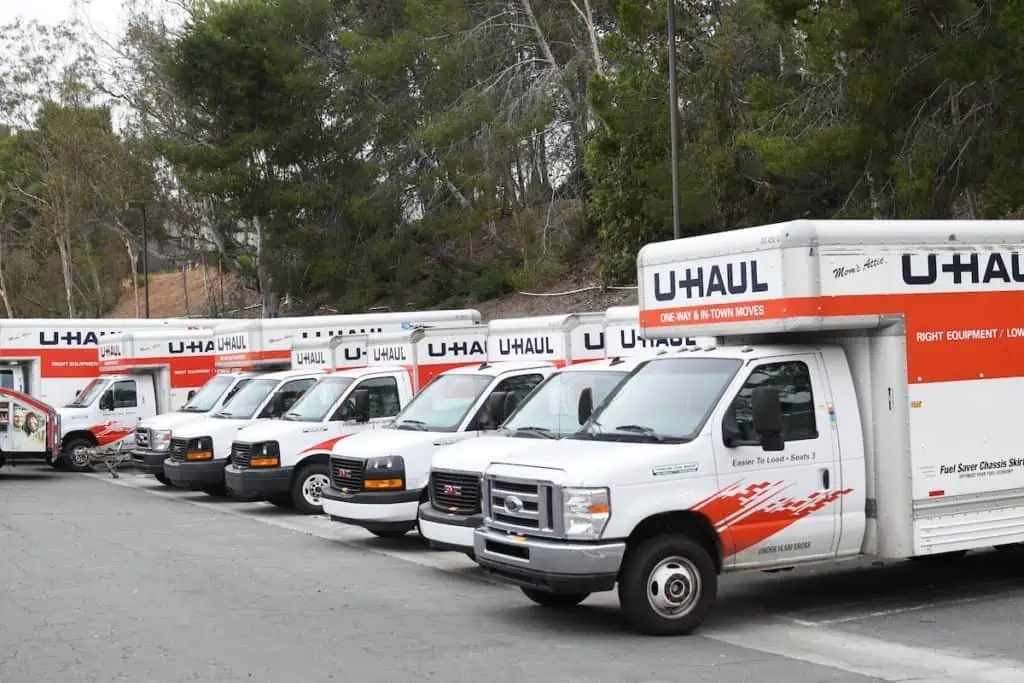
 Contrary to popular belief, not everything’s more expensive in SoCal versus NorCal. When comparing the cost of moving in Northern California versus Southern California, there’s virtually no statistical difference. Moving labor costs are roughly $443 in both regions, on average.
Contrary to popular belief, not everything’s more expensive in SoCal versus NorCal. When comparing the cost of moving in Northern California versus Southern California, there’s virtually no statistical difference. Moving labor costs are roughly $443 in both regions, on average.